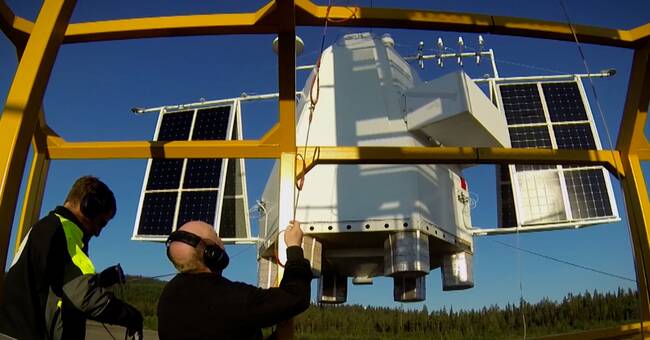Harvard professor David Keith has been working for decades to bring aerosols into the atmosphere to study solar radiation effects, including in New Mexico in 2012, and in Tuscon in Arizona in 2018.
The projects have encountered local opposition, and the project has never succeeded in lifting.
Until possibly in June this year, on Swedish soil, and with the help of the state-owned Rymdaktiebolaget SSC.
No particles are released in Kiruna
A high-altitude balloon as large as a 12-storey building will test equipment in the stratosphere above Kiruna.
But SSC emphasizes that the purpose of the balloon experiment from Esrange in Kiruna is to test the balloon technology itself, not to release any particles.
Harvard researchers also emphasize that it is the navigation of the experimental gondola that they want to test.
But the goal of the Scopex project is to eventually investigate what happens if you spread up to 2 kilos of calcium carbonate in a 1 km long and 100 meter wide plume close to 20 kilometers up in the stratosphere.
The project is considered by many to pave the way for so-called solar geoengineering.
Hope to cool the earth
Geoengineering is various techniques for large-scale, intentional manipulation of the environment, for example by trying to reflect solar radiation away from the earth with a mist of particles.
The hope is to cool the earth, to try to parry the warming of the greenhouse effect.
The idea is based on volcanic eruptions that led to large amounts of ash in the atmosphere that lowered the earth's average temperature temporarily.
But the processes in the atmosphere and on the ground have also led to the ozone layer being damaged, and drought and famine affecting parts of the world.
"Great risks to humanity"
Geoengineering is largely unexplored, but precisely these stratospheric aerosol injections are judged by the researchers SVT spoke to involve great risks for humanity, and almost incalculable consequences for the earth's climate and ecosystem, and also risk of war and conflicts over who should have the right to use the technology.
The Scopex project states that it is aware of the risks of stratospheric aerosol injections, but believes that it is important to research technology that may be needed as a plan B, if the climate changes that humans cause and which heat the earth have catastrophic consequences.

